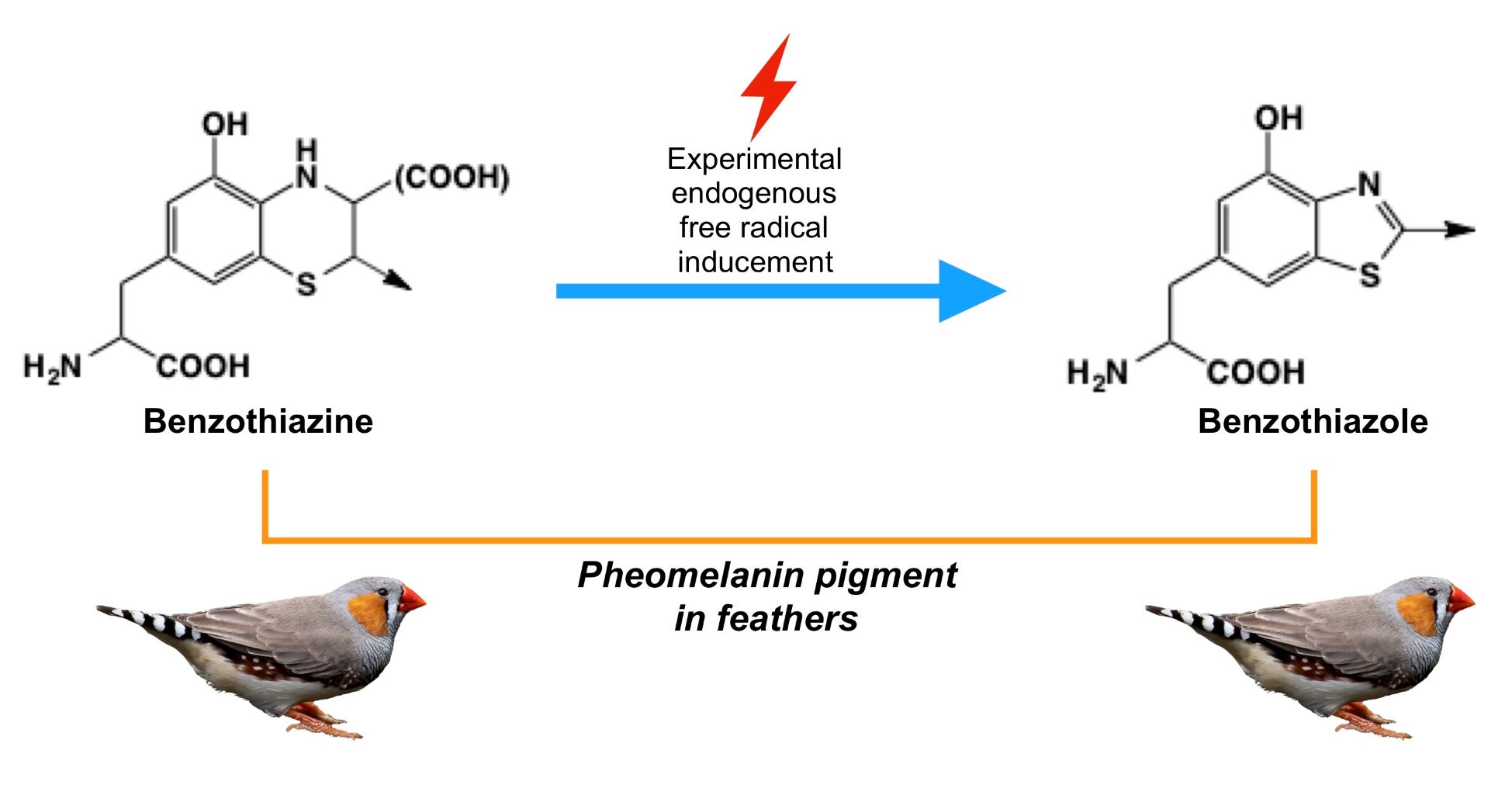Pheomelanin, the sulfurated form of melanin pigment, is known to produce reactive oxygen species (ROS) and oxidative stress-mediated cytotoxicity. Previous studies have shown a conversion of the benzothiazine moiety of pheomelanin to the benzothiazole moiety under heat or energetic radiation exposure, but it is unknown whether endogenous conditions can also produce this structural change. An endogenous free radical production was experimentally induced by exposing male zebra finches Taeniopygia guttata to diquat dibromide in drinking water during the development of pheomelanin-pigmented flank feathers. The benzothiazine-to-benzothiazole ratio of feather pheomelanin decreased more and was significantly lower in diquat-treated birds than in controls. Therefore, endogenous free radicals, and not only environmental radiation, can also promote structural changes in pheomelanin. While it was previously assumed that benzothiazine is responsible for the redox reaction of pheomelanin, recent findings suggest that benzothiazole has a greater ability to deplete antioxidants. Therefore, the possibility should be considered that the supplementation of antioxidants to limit the effects of endogenous free radicals can contribute to prevent melanoma, a disease that is favored by oxidative stress produced by pheomelanin. informacion[at]ebd.csic.es: Rodríguez-Martínez et al (2020) Increase of the benzothiazole moiety content of pheomelanin pigment after endogenous free radical inducement. Dyes and Pigments. DOI 10.1016/j.dyepig.2020.108516
https://www.sciencedirect.com/science/article/abs/pii/S0143720820308378

 Las altas temperaturas están provocando que las lagunas y las marismas de Doñana pierdan agua rápidamente
Las altas temperaturas están provocando que las lagunas y las marismas de Doñana pierdan agua rápidamente




